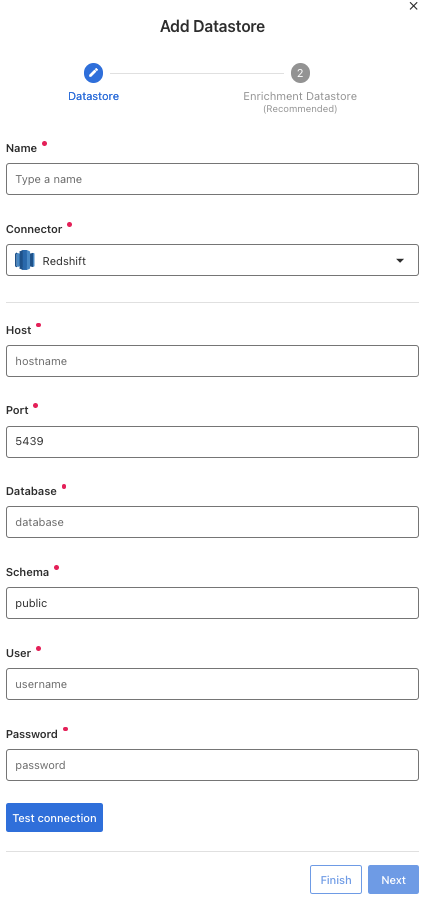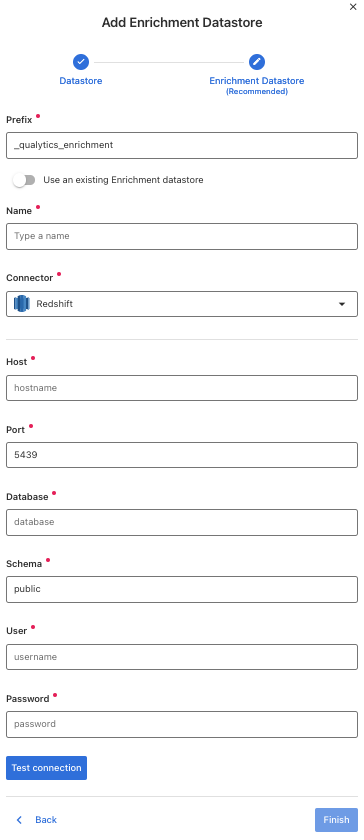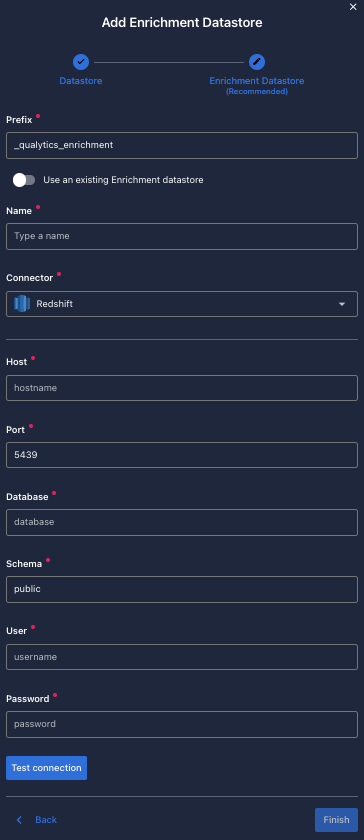Amazon RedShift
Steps to setup Amazon RedShift
Fill the form with the credentials of your data source.


Once the form is completed, it's necessary to test the connection to verify if Qualytics is able to connect to your source of data. A successful message will be shown:


Warning
By clicking on the Finish button, it will create the Datastore and skipping the configuration of an Enrichment Datastore.
- To configure an Enrichment Datastore in another moment, please refer to this section
Note
It is important to associate an Enrichment Datastore with your new Datastore
- The
Enrichment Datastorewill allow Qualytics to recordenrichment data, copies of the sourceanomalous dataand additionalmetadatafor yourDatastore
Configuring an Enrichment Datastore
-
If you have an
Enrichment Datastorealready setup, you can link it by enable to use an existing Enrichment Datastore and select from the list -
If you don't have an
Enrichment Datastore, you can create one at the same page:

Once the form is completed, it's necessary to test the connection. A successful message will be shown:


Warning
By clicking on the Finish button, it will create the Datastore and link or create the Enrichment Datastore
Fields
Name required
required- The datastore name to be created in Qualytics App
Host required
required- Host url to be connected.
- Hostname in the form
Port required
required- Port to connect to the server .
- The default port is
5439
Database required
required- The
databasename to be connected.
Schema required
required- The
schemaname to be connected.
User required
required- The
userthat has access to the redshift server.
Password required
required- The
passwordthat has access to the redshift server.